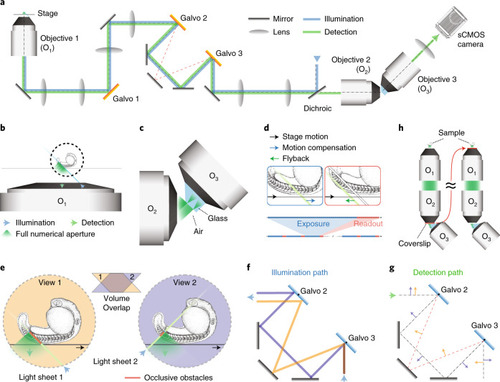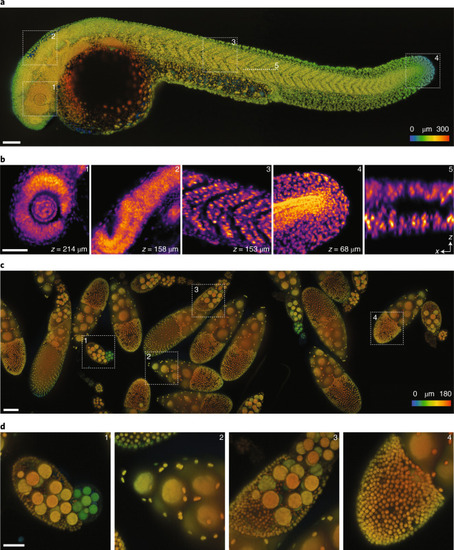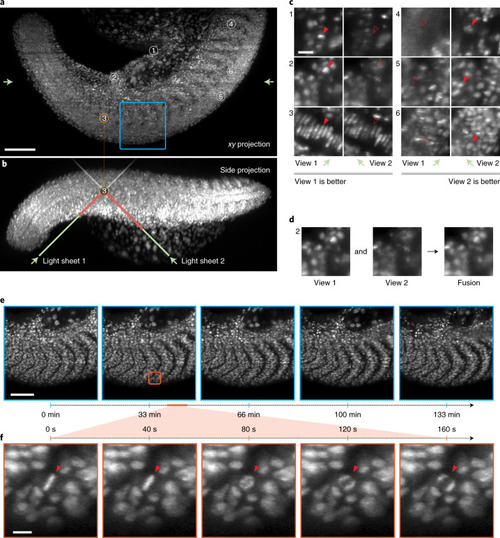- Title
-
DaXi-high-resolution, large imaging volume and multi-view single-objective light-sheet microscopy
- Authors
- Yang, B., Lange, M., Millett-Sikking, A., Zhao, X., Bragantini, J., VijayKumar, S., Kamb, M., Gómez-Sjöberg, R., Solak, A.C., Wang, W., Kobayashi, H., McCarroll, M.N., Whitehead, L.W., Fiolka, R.P., Kornberg, T.B., York, A.G., Royer, L.A.
- Source
- Full text @ Nat. Methods
|
|
|
|
|
|
|
|
|
a, Top and side views of nine zebrafish embryos mounted in 0.1% agarose gel. b, The embryos (only eight are shown) were imaged sequentially (at 4.5 min per round) for up to 8 h. Only the final frames at t = 8 h imaging are shown (see also Supplementary Video 6 for the time lapse of all nine embryos). All the embryos developed normally. The images are maximum intensity projection, color-coded for depth, of the 3D volume. Scale bar, 200 μm. c, Five time points from three different fish are shown, illustrating the imaging reproducibility across multiple samples. Scale bars, 50 μm (top right) and 200 μm (bottom left). |





